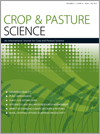CP20241Assessment of foliar-applied phosphorus fertiliser formulations to enhance phosphorus nutrition and grain production in wheat
 , Evelina Facelli, Courtney A. E. Peirce, Viran Kathri Arachchige and Michael J. McLaughlin
, Evelina Facelli, Courtney A. E. Peirce, Viran Kathri Arachchige and Michael J. McLaughlin
Fertilisation of broadacre crops with foliar phosphorus (P) is attractive as a more tactical option than sowing-applied P. Despite foliar P application increasing P uptake by wheat in soils with available P levels marginal for wheat production under controlled conditions, no effects were observed under field conditions. Furthermore, wheat plants did not downregulate uptake of P by roots in response to foliar P fertilisation, suggesting that the plant was not substituting foliar P uptake for root P uptake.
CP20241 Abstract | CP20241 Full Text | CP20241PDF (609 KB) Open Access Article




